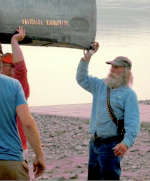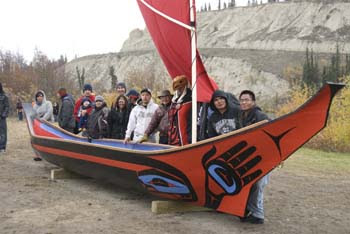Having never paddled the Yukon, I'm certainly not in a position to settle a sediment "settling" debate. However, everyone who has posted thus far has admitted they settled water at some point—at least below the White and at least overnight.
Don't chemicals just accelerate the settling process? I can understand that a big war canoe crew, which only has a few hours to stop and sleep each day, has to have a lot more clear water and a lot faster than a two person tandem canoe, and that a big crew probably can't wait overnight. So, settling chemicals make sense to me.
In fact, listening to this interesting exchange, if I were planning to paddle the Yukon in a lone canoe for many days/weeks, I wouldn't trust anyone's prediction as to how sedimented the water would be or where, and I would bring along as much bottled water as possible as well as redundant mechanical and chemical purifying and settling solutions. Why not? If I don't need them, I don't use them. But if I do, I have them. It's not like I need to worry about portaging redundant gear on the Yukon.
Don't chemicals just accelerate the settling process? I can understand that a big war canoe crew, which only has a few hours to stop and sleep each day, has to have a lot more clear water and a lot faster than a two person tandem canoe, and that a big crew probably can't wait overnight. So, settling chemicals make sense to me.
In fact, listening to this interesting exchange, if I were planning to paddle the Yukon in a lone canoe for many days/weeks, I wouldn't trust anyone's prediction as to how sedimented the water would be or where, and I would bring along as much bottled water as possible as well as redundant mechanical and chemical purifying and settling solutions. Why not? If I don't need them, I don't use them. But if I do, I have them. It's not like I need to worry about portaging redundant gear on the Yukon.







